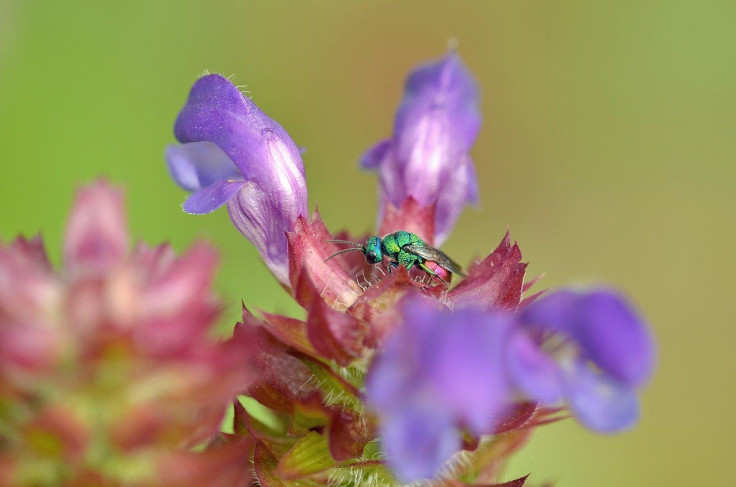This Stunning New Wasp Species Was Discovered Through Its 'Language'
KEY POINTS
- Cuckoo wasps are hard to distinguish because they look very similar
- Researchers discovered a new cuckoo wasp species
- They made the discovery by observing the species' "language"
Researchers have discovered a new cuckoo wasp species, thanks to the "language" the insects use.
Cuckoo wasps are parasitic wasps that lay their eggs in other nests, where their larvae grow fast and end up eating the hosts' larvae, eggs and other food supply, the Norwegian University of Science and Technology (NTNU) explained in a news release. In a recent study, published in Insect Systematics and Diversity, a team of researchers was able to spot a new species that's essentially "speaking" the language of their hosts.
Beautiful but problematic species
Cuckoo wasps are some of the most most beautiful creatures, with shiny and brightly colored exteriors that make them look rather like jewels.
But as beautiful as they are, they're also quite problematic because they’re so similar that it’s very hard to determine one species from another. Although DNA barcoding has made it a bit easier to differentiate them, it can still be hard to determine some of them, the release said.
"In this case, we had two cuckoo wasps with microscopic differences in appearance and very small differences in DNA," study co-author Frode Ødegaard, of NTNU University Museum, said.
Wasp language
Evidently, wasps have a specific chemical language that they use to communicate and even species that are very closely related have different languages so that they don't interbreed, NTNU explained. Even their preferred hosts also play a part in how they "speak."
"When you live as a parasite, it's important not to be discovered, and therefore the cuckoo wasp has also learned the language of its host," Ødegaard said.
Through a language study, the researchers were able to distinguish two separate cuckoo wasp species that were nearly identical. This was because even though they were very similar, they used different hosts and therefore "spoke" different languages.
New wasp species discovered in Norway https://t.co/0sd3AfFvVD pic.twitter.com/Pj0rlvGvSb
— Zyite (@ZyiteGadgets) April 6, 2021
One of them was a newly identified species that was so rare that only one specimen of it was available in Lista peninsula in Norway. The research team named it Chrysis parabrevitarsis, which means "the one standing next to brevitarsis" due to its striking similarity to the Chrysis brevitarsis.
The researchers said this shows the value of combining such analysis with genetic barcoding to help distinguish the species from one another.

© Copyright IBTimes 2025. All rights reserved.






















